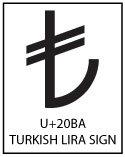Mountain View, CA, Sept. 10, 2012 - The Unicode® Consortium announced today the release of a new version of the Unicode Common Locale Data Repository
(Unicode CLDR 22.0), providing key building blocks for software to support the world's languages.
Unicode CLDR 22.0 contains data for 215 languages and 227
territories—654 locales in all. The main focus for this release is to
flesh out data items in major languages and locales, yielding an
increase of over 100% in the total number of data fields. Other major
features include the addition of keyboard mapping data for different
platforms, the new Zhuyin (Bopomofo) sort order for Chinese, and script
metadata. There are also enhancements to compact decimals (such as
formatting 1,000,000 as “1 million” or “1M”) for different languages and
to rule-based number formats (such as writing 423 as "four hundred and
twenty-three"). For more details, see the
CLDR 22.0 Release Note.
CLDR is used to adapt software to the conventions of
different languages for such common software tasks as formatting of
dates, times, time zones, numbers, and currency values; sorting text;
choosing languages or countries by name; and transliterating different
alphabets.
It is by
far the largest and most extensive standard repository of locale data,
used by a wide spectrum of companies for their software
internationalization and localization. It is widely deployed via
International Components for Unicode (ICU), and also accessed directly by companies such as Apple, Google, IBM, Twitter, and many others.
CLDR is part of the Unicode locale data project, together with the
Unicode Locale Data Markup Language (
LDML)—an XML format used for general interchange of locale data, such as in Microsoft's .NET. See the
charts pages for views of the CLDR data, organized in various ways. For more information about the Unicode CLDR project see
cldr.unicode.org.
About the Unicode Consortium
The Unicode
Consortium is a non-profit organization founded to develop, extend and
promote use of the Unicode Standard and related globalization standards.
The membership of the consortium represents a broad spectrum of
corporations and organizations in the computer and information
processing industry. Members are: Adobe Systems, Apple, Google,
Government of Andhra Pradesh, Government of Bangladesh, Government of
India, IBM, Microsoft, Monotype Imaging, Oracle, SAP, Tamil
Virtual University, The Society for Natural Language Technology
Research, The University of California (Berkeley), Yahoo!, plus well
over a hundred Associate, Liaison, and Individual members. For more
information, please contact the Unicode Consortium
http://www.unicode.org/contacts.html.
 Version 6.2 of the Unicode Standard is now available. This
version adds only a single character, the newly adopted Turkish
Lira sign; however, the properties and behaviors for many other
characters have been adjusted. Emoji and pictographic symbols now
have significantly improved line-breaking, word-breaking and
grapheme cluster behaviors. The script categorizations for some
characters are improved and better documented.
Version 6.2 of the Unicode Standard is now available. This
version adds only a single character, the newly adopted Turkish
Lira sign; however, the properties and behaviors for many other
characters have been adjusted. Emoji and pictographic symbols now
have significantly improved line-breaking, word-breaking and
grapheme cluster behaviors. The script categorizations for some
characters are improved and better documented.



